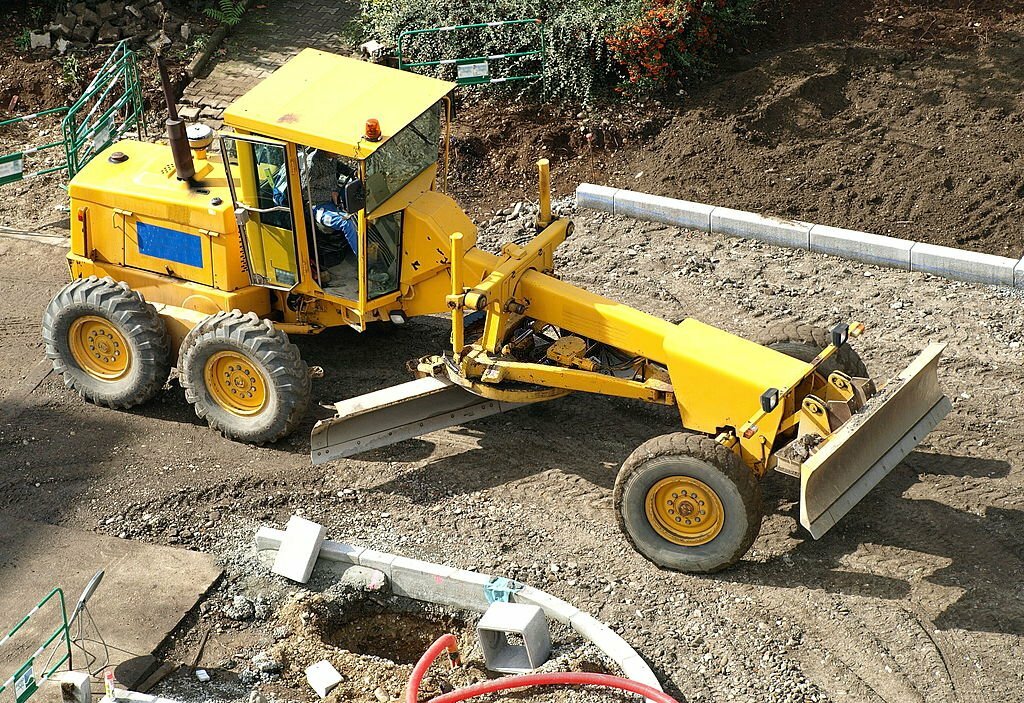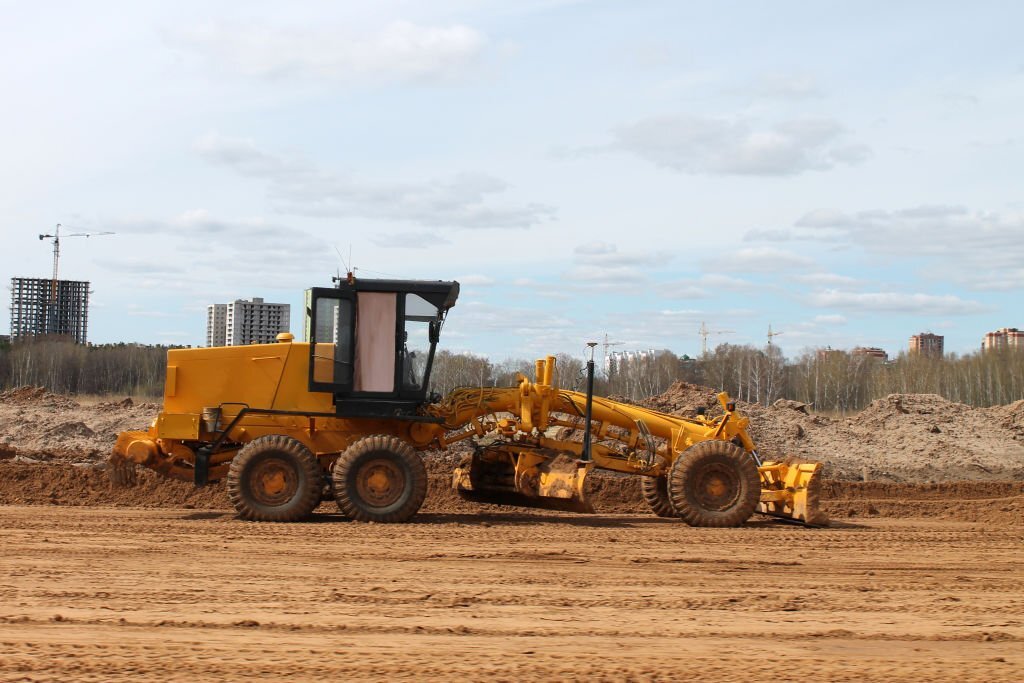Introduction

In the ongoing battle against environmental degradation and the imperative to restore ecosystems, land reclamation projects stand as pivotal endeavors. These initiatives are instrumental in transforming degraded and damaged landscapes into thriving ecosystems capable of supporting biodiversity. In this pursuit, the integration of advanced earthmoving equipment has emerged as a game-changer, ushering in a revolutionary phase in the reclamation and rehabilitation of degraded lands. Traditionally, land reclamation relied on labor-intensive methods, but the advent of cutting-edge earthmoving technology has brought efficiency, precision, and sustainability to the forefront. This transformative shift signifies a departure from conventional practices, as state-of-the-art equipment empowers environmental restoration efforts with unprecedented capabilities. From precision grading to targeted reclamation, these advancements not only expedite the process but also enhance the overall success of restoring ecosystems. The integration of advanced earthmoving equipment in land reclamation projects exemplifies a commitment to reclaiming nature’s balance, offering a beacon of hope for the rejuvenation of our planet’s vital landscapes and the preservation of biodiversity.
The Evolution of Earthmoving Equipment in Land Reclamation

Land reclamation, a process rooted in labor-intensive methods and basic machinery, has undergone a profound metamorphosis with the advent of cutting-edge earthmoving equipment. This transformative shift marks the dawning of an era where efficiency, precision, and sustainability take center stage in environmental restoration efforts. In the traditional landscape of reclaiming land, manual processes and rudimentary machinery were the norm, often leading to prolonged timelines and limited effectiveness. However, the introduction of advanced earthmoving technology has redefined the possibilities. State-of-the-art equipment, equipped with precision grading and soil remediation technologies, has elevated the efficiency of land reclamation to unprecedented levels. These innovations not only expedite the restoration process but also ensure a higher degree of precision in reshaping landscapes and addressing environmental challenges. Beyond efficiency gains, the integration of sustainable practices in land reclamation projects highlights a commitment to responsible environmental stewardship, promising a future where degraded lands are rejuvenated with a harmonious blend of technology, precision, and ecological sensitivity.
Cutting-Edge Technologies
1. Precision Grading:

In the realm of land reclamation, the incorporation of advanced earthmoving equipment has revolutionized the precision and efficacy of environmental restoration efforts. Specifically, these machines employ state-of-the-art precision grading technologies, allowing for the meticulous shaping and leveling of the land. This precision is pivotal in ensuring optimal soil remediation, addressing issues of contamination, and laying the groundwork for successful revegetation initiatives. By precisely sculpting the terrain, advanced equipment creates an environment conducive to the establishment of diverse plant species, promoting biodiversity and ecological resilience. The synergy between precision grading and soil remediation not only expedites the restoration process but also enhances the long-term viability of reclaimed lands. In essence, the utilization of cutting-edge technology in earthmoving equipment underscores a commitment to achieving comprehensive and sustainable results in land reclamation, fostering the transformation of degraded areas into vibrant, thriving ecosystems.
2. Soil Remediation Technology:
In the contemporary landscape of land reclamation, the integration of state-of-the-art equipment signifies a groundbreaking approach to addressing soil contamination and restoring natural fertility. These cutting-edge machines are equipped with advanced soil remediation technologies, designed to identify and rectify pollutants in a targeted and efficient manner. The precision afforded by these technologies ensures a meticulous restoration process, promoting the revitalization of ecosystems by reinstating essential nutrients to the soil. Beyond mere soil reclamation, this advanced equipment plays a vital role in creating an environment conducive to sustainable revegetation, accelerating the restoration timeline. By remedying soil contamination, these innovations contribute not only to the successful rehabilitation of degraded lands but also to the creation of ecologically resilient and fertile landscapes. This harmonious blend of technology and environmental consciousness exemplifies a commitment to comprehensive and sustainable land reclamation, ushering in a new era where the restoration of natural habitats aligns seamlessly with cutting-edge technological solutions.
Efficiency and Sustainability Gains
1. Reduced Environmental Impact:
The design of earthmoving equipment in the context of land reclamation reflects a concerted effort to minimize environmental disruption and preserve fragile ecosystems. These machines are equipped with features and technologies that prioritize ecological sensitivity during the restoration process. Advanced equipment is adept at minimizing ground disturbance, ensuring that the land reclamation activities have minimal impact on surrounding habitats. The precision and efficiency of these machines contribute to the preservation of ecosystems, allowing for a more targeted approach to restoration without causing unnecessary harm to flora and fauna. By mitigating disruption, earthmoving equipment facilitates the regeneration of natural habitats, promoting biodiversity and the re-establishment of ecological balance. This commitment to environmental preservation underscores the industry’s dedication to responsible and sustainable land reclamation practices, ensuring that the restoration of degraded areas is achieved with utmost consideration for the delicate ecosystems that inhabit them.
2. Sustainable Construction Practices:
The adoption of advanced earthmoving equipment in land reclamation not only signifies a technological leap but also aligns harmoniously with sustainable construction practices. This integration is emblematic of a commitment to responsible and eco-friendly land restoration. Advanced equipment, equipped with innovative features, prioritizes environmental sustainability by minimizing resource consumption, optimizing efficiency, and reducing the ecological footprint of land reclamation projects. These machines often incorporate energy-efficient technologies, reducing fuel consumption and emissions, further contributing to environmentally conscious practices. Beyond efficiency gains, the use of advanced equipment in land restoration projects exemplifies a broader commitment to responsible construction methodologies that consider the long-term impact on the environment. This dedication to sustainability ensures that the process of reclaiming and rehabilitating degraded lands not only achieves its intended goals but does so in a manner that respects and nurtures the delicate ecological balance of the surrounding environment.
Precision in Environmental Restoration
1. Targeted Reclamation:
The versatility of earthmoving equipment in land reclamation extends beyond its mechanical capabilities; it empowers targeted reclamation efforts, focusing on specific areas to maximize the effectiveness of restoration initiatives. Modern machinery’s adaptability allows for a strategic approach, tailoring efforts to address the unique characteristics and challenges of distinct locations. By pinpointing specific areas for reclamation, earthmoving equipment ensures that resources are concentrated where they are needed most, optimizing the impact of restoration projects. This targeted approach not only streamlines the reclamation process but also allows for a more nuanced response to ecological nuances, enhancing the overall success of restoration endeavors. The ability to focus efforts where they are most impactful showcases the evolution of earthmoving technology beyond mere functionality, emphasizing a thoughtful and efficient approach to land reclamation that aligns with the broader goals of environmental restoration and sustainable ecosystem management.
2. Erosion Control Measures:

In the realm of land reclamation, modern earthmoving machinery goes beyond the basics, incorporating advanced features for erosion control to safeguard the long-term stability of reclaimed areas. These innovative features play a crucial role in preventing soil erosion, a common concern in areas undergoing restoration. By deploying cutting-edge erosion control technologies, such as stabilization measures and reinforced soil structures, modern machinery ensures that the rehabilitated landscapes withstand the forces of wind and water, promoting the establishment of vegetation and minimizing the risk of erosion. This proactive approach not only protects the integrity of the reclaimed land but also contributes to the overall success and sustainability of restoration initiatives. The incorporation of erosion control features showcases the industry’s commitment to comprehensive land reclamation, ensuring that the revitalized areas not only undergo successful restoration but also maintain their ecological stability over the long term.
Conclusion
The integration of advanced earthmoving equipment in land reclamation projects marks a transformative phase in environmental restoration. From precision grading and soil remediation technologies to sustainable practices, these advancements signify a commitment to reclaiming and rehabilitating degraded land with unparalleled efficiency. As the industry continues to leverage cutting-edge technologies, the future of land reclamation holds the promise of revitalized landscapes and thriving ecosystems, paving the way for a sustainable and greener tomorrow.

